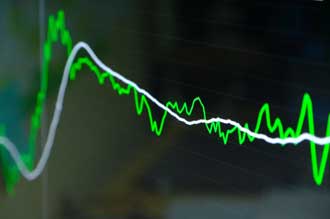The S&P 500 just hit an all-time high last week, but today investors are bracing for a market correction. If that sounds completely crazy to you, then you're not alone.

A market correction is defined as a 10% drop in an index from recent highs. While the S&P 500 is only down a mere 2% since hitting its recent high, the Nasdaq is down over 8%. That has the Nasdaq on the edge of correction territory, and tech investors are wondering what they should do.
As always, we're here to help.
Let's break down a few of the big questions investors are asking right now and then get into what investors can do to protect and grow their money during this uncertain time.
Why Are Stocks Down?
The simple answer is that stocks shot to new highs amid one of the worst economic crises in history, and Wall Street is starting to get nervous.
The bull market that started in the wake of last year's market crash is now a full year old. From trough to peak, the Dow has booked over 70% returns in just about a year. The tech-heavy Nasdaq did even better. It doubled over that same time.
Investors who started buying in April of last year, especially those buying tech stocks, have reaped gargantuan gains. Look at a stock like Tesla Inc. (NASDAQ: TSLA). It's shot over 480% in the last year.
The problem now is the incredible rally for tech stocks has far outpaced the growth in the economy.
Unlike other recessions, investors knew the cause of this last one could be fixed. Vaccinations would end the pandemic, and the economy would bounce back. The government has injected trillions of dollars into the economy to help keep it alive, including direct payments to individuals and families. The Fed has slashed interest rates to near zero while continuing to pump liquidity into markets.
This optimism helped fuel stocks higher despite the economy's struggles.
But a year into the rally and with vaccinations rolling out - over 20% of adults are now fully vaccinated - investors are starting to wonder when they'll see the economic growth they've been expecting. They're also starting to worry that the economic growth could push inflation higher, forcing the Fed to hike rates to reign it in.
That's why stocks have been on such a roller coaster lately. Every time bond yields move or Fed Chair Jerome Powell speaks, stocks move too. Every time news breaks of a new coronavirus variant or jump in cases, stocks move.
Simply put, we're at the point in the stock rally where investors want to see concrete economic growth, not predictions of future growth.
Does This Mean a Market Correction Is Coming?
Possibly.
The Nasdaq already dipped into correction territory once this year. Coronavirus cases are now rising again in parts of the world, including the United States, despite the vaccine effort. Bond yields have a life of their own.
We very well could see a tech correction soon since those stocks have surged the most. Investors are more likely to take profits there since they've already seen such big gains. The hardier stocks on the Dow might see more buying as the economy opens back up too, and that could come at the expense of tech.
But with stimulus checks being sent to Americans right now and vaccine appointments opening up to nearly everyone, there is lots of reason for optimism. Even if the Nasdaq does correct, it might not last for long, and there is plenty of reason it could power higher in the coming weeks.
What Should I Do About a Market Correction?
Market corrections happen all the time. They are sometimes even necessary to help stocks go higher. They shake out the weak money and speculators and build bases for stocks to rally from.
So if you're expecting a market correction, it's not a time to panic.
Here are a few ideas on how you can protect yourself and set yourself up for profits.
First, you can add trailing stops to stocks you own, especially any sky-high tech shares. Trailing stops are sell orders triggered when the stock drops a certain percentage or dollar amount that you pick. You can choose a 5% drop, a 10% drop, a 20% drop, and so on. Whatever makes you the most comfortable.
This helps make sure you lock in your profits on the stock if a bigger sell-off knocks it down.
Second, make a buy list.
A correction can be the perfect entry point into a stock you'd love to own. It might the be lowest price you'll get.
When you see stocks you like tumbling 10% or more it might be time to load up on them. It's also the perfect time to use lowball orders. Submit a bid for the stock below the current share price of the stock and see if any weak-kneed sellers take you up on it.
A correction is a target-rich environment for buyers.
If you're looking for some help with a buy list, make sure you check this out too: The Complete List of Best (and Worst) Stocks for 2021.
And if you're worried a correction could spiral into a crash, we've got you covered there too.
As a service to our readers, our comprehensive report on navigating a market crash is completely free to our readers.


